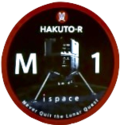Hakuto-R Mission 1: Difference between revisions
m Minor fixes |
direct source |
||
| Line 48: | Line 48: | ||
Using data collected from a previous lunar scanning mission, ispace determined that the mission would attempt a landing in the [[Atlas (crater)|Atlas]] crater in the [[Mare Frigoris]] region of the Moon.<ref name=":2" /> In an effort to conserve fuel, the mission used a slower path to approach the Moon, entering [[lunar orbit]] in March 2023.<ref>{{Cite web |last= |date=25 April 2023 |title=Watch Japan’s ispace attempt moon landing with Hakuto-R lunar lander |url=https://www.newscientist.com/article/2370639-watch-japans-ispace-attempt-moon-landing-with-hakuto-r-lunar-lander/ |access-date=2023-04-25 |website=[[New Scientist]] |language=en-US}}</ref> |
Using data collected from a previous lunar scanning mission, ispace determined that the mission would attempt a landing in the [[Atlas (crater)|Atlas]] crater in the [[Mare Frigoris]] region of the Moon.<ref name=":2" /> In an effort to conserve fuel, the mission used a slower path to approach the Moon, entering [[lunar orbit]] in March 2023.<ref>{{Cite web |last= |date=25 April 2023 |title=Watch Japan’s ispace attempt moon landing with Hakuto-R lunar lander |url=https://www.newscientist.com/article/2370639-watch-japans-ispace-attempt-moon-landing-with-hakuto-r-lunar-lander/ |access-date=2023-04-25 |website=[[New Scientist]] |language=en-US}}</ref> |
||
After a five month travel time, the mission traveled {{Convert|1400000|km|mi}}, further than any privately-funded spacecraft, to attempt a [[lunar landing]] on 25 April 2023.<ref name=":0" /><ref>{{cite web | url=https://www.space.com/historic-moon-private-landing-ispace-webcast | title=A private moon lander will make history when it touches down on April 25. Here's how to watch it live | website=[[Space.com]] | date=24 April 2023 }}</ref> Communication with Hakuto-R Mission 1 was lost during the final moments of descent to the lunar surface at 16:40 UTC (00:40 JST) on 25 April.<ref name=":1" /> Analysis determined that a loss of propellant in the final stage of landing led to a rapid descent and hard landing on the lunar surface.<ref name=":1" /> |
After a five month travel time, the mission traveled {{Convert|1400000|km|mi}}, further than any privately-funded spacecraft, to attempt a [[lunar landing]] on 25 April 2023.<ref name=":0" /><ref>{{cite web | url=https://www.space.com/historic-moon-private-landing-ispace-webcast | title=A private moon lander will make history when it touches down on April 25. Here's how to watch it live | website=[[Space.com]] | date=24 April 2023 }}</ref> Communication with Hakuto-R Mission 1 was lost during the final moments of descent to the lunar surface at 16:40 UTC (00:40 JST) on 25 April.<ref name=":1" /> Analysis determined that a loss of propellant in the final stage of landing led to a rapid descent and hard landing on the lunar surface.<ref name=":1" /><ref>{{Cite web |title=Status Update on ispace HAKUTO-R Mission 1 Lunar Lander |url=https://ispace-inc.com/news-en/?p=4655 |access-date=2023-04-26 |website=ispace |language=en}}</ref> |
||
==References== |
==References== |
||
Revision as of 21:01, 26 April 2023
 Full size model of Hakuto-R | |
| Mission type | Technology demonstration |
|---|---|
| Operator | ispace |
| COSPAR ID | 2022-168A |
| SATCAT no. | 54696 |
| Website | ispace-inc |
| Spacecraft properties | |
| Spacecraft | Hakuto-R M1 |
| Spacecraft type | Lunar lander |
| Manufacturer | ispace |
| Launch mass | 1,000 kg (2,200 lb) |
| Dry mass | 340 kg (750 lb) |
| Start of mission | |
| Launch date | 11 December 2022, 07:38 UTC |
| Rocket | Falcon 9 B1073.5 |
| Launch site | CCSFS, SLC-40 |
| Contractor | SpaceX |
| End of mission | |
| Last contact | 25 April 2023, 16:40 UTC |
| Moon lander | |
| Landing site | Atlas crater (planned) |
 Hakuto-R Mission 1 patch | |
Hakuto-R Mission 1 was a failed private Japanese lunar landing mission that was launched in 2022. Primarily a technological demonstrator, the lander is built and operated by ispace and carries the Emirates Lunar Mission.[1] Traveling approximately 1,400,000 kilometres (870,000 mi), it is the furthest a privately-funded spacecraft has traveled.[2] Communication with the lander was lost during the final seconds of its April 2023 descent.[3]
Background
The project began with engineer Andrew Barton in 2008, who sought to win the Google Lunar X Prize by landing a privately-funded rover on the Moon, gathered an international group of professionals to create White Label Space.[3] Takeshi Hakamada would found ispace in 2010 as a Japanese branch of White Label Space.[3] Many of the professionals abandoned the project by 2013, though a group of Japanese members sought to continue with the project, which was renamed from White Label Space to Hakuto, based on a Japanese mythological white rabbit.[3][4] By 2017, ispace had secured $90 million in funding and though no teams in the Google Lunar X Prize ever launched before the 2018 deadline, the Hakuto team would continue.[3] In April 2022, ispace was placed on the Tokyo Stock Exchange, receiving a 65% increase in its share price within two weeks.[3]
Lander specifications
The Hakuto-R lander was measured at 2.3 metres (7.5 ft) tall by 2.6 metres (8.5 ft) wide, with a total weight of approximately 1,000 kilograms (2,200 lb) with its payload and fuel.[5] To perform a stable landing, the lander has four landing legs and a main thruster.[5]
Mission
Hakuto-R Mission 1 was launched on 11 December 2022 aboard a Falcon 9 rocket,[6] separating from the rocket 47 minutes later at a distance around 600 miles (970 km) away from Earth.[3] Inside the spacecraft are payloads from NASA, the Emirates Lunar Mission rover Rashid in a partnership with the Mohammed bin Rashid Space Centre (MBRSC), along with Tomy and JAXA's SORA-Q transformable lunar robot.[2][7] The lander also houses another payload, a music disc featuring the song ‘SORATO’ by the Japanese rock band Sakanaction, which was initially released in 2018 as a part of the Team Hakuto campaign for the Google Lunar XPRIZE.[8]
Using data collected from a previous lunar scanning mission, ispace determined that the mission would attempt a landing in the Atlas crater in the Mare Frigoris region of the Moon.[5] In an effort to conserve fuel, the mission used a slower path to approach the Moon, entering lunar orbit in March 2023.[9]
After a five month travel time, the mission traveled 1,400,000 kilometres (870,000 mi), further than any privately-funded spacecraft, to attempt a lunar landing on 25 April 2023.[2][10] Communication with Hakuto-R Mission 1 was lost during the final moments of descent to the lunar surface at 16:40 UTC (00:40 JST) on 25 April.[3] Analysis determined that a loss of propellant in the final stage of landing led to a rapid descent and hard landing on the lunar surface.[3][11]
References
- ^ "NASA - NSSDCA - Spacecraft - Details". nssdc.gsfc.nasa.gov. Retrieved 2023-04-25.
- ^ a b c Alamalhodaei, Aria (25 April 2023). "Watch ispace attempt to land on the moon for the first time". TechCrunch.
- ^ a b c d e f g h i Chang, Kenneth (2023-04-25). "Live Updates: A Japanese Company Attempts the 1st Private Moon Landing". The New York Times. ISSN 0362-4331. Retrieved 2023-04-25.
- ^ The Japanese Space Bots That Could Build Moon Valley Sarah Scoles, Wired 14 May 2018
- ^ a b c "Watch Japan's ispace attempt moon landing with Hakuto-R lunar lander". New Scientist. 25 April 2023. Retrieved 2023-04-25.
- ^ Swift, Rocky (13 April 2023). "Japan's ispace launches commercial moon lander, in potential world first". Reuters.
- ^ Rabie, Passant (12 December 2022). "SpaceX Launches Moon-Bound Private Japanese Lander Following Delays". Gizmodo. Retrieved 15 December 2022.
- ^ "Ispace Announces Mission 1 Launch Date".
- ^ "Watch Japan's ispace attempt moon landing with Hakuto-R lunar lander". New Scientist. 25 April 2023. Retrieved 2023-04-25.
- ^ "A private moon lander will make history when it touches down on April 25. Here's how to watch it live". Space.com. 24 April 2023.
- ^ "Status Update on ispace HAKUTO-R Mission 1 Lunar Lander". ispace. Retrieved 2023-04-26.
